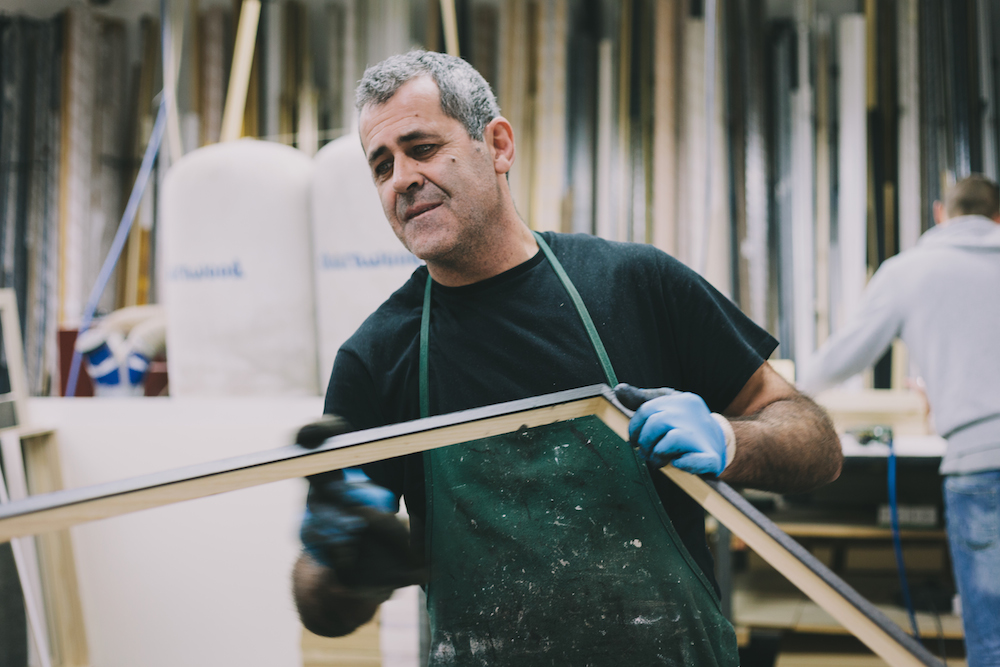Spotlight on King And McGaw
Today's Spotlight is on King and McGaw. What started out as a small screen printers in a Brighton basement, today, they've grown to have a factory and design studio in Newhaven and work directly with museums, galleries and artists to bring quality and affordable art to you.
But it's a success story that has also had its ups and downs, a fire causing the loss of nearly £3 million of stock, could have been a disaster for the business but which led to the partnership that are today and which rapidly grew to $35 million turnover by 2000.
Read on for the inspiration behind this brand.
King & McGaw started out as a small screen printers in a Brighton basement. Today, it reproduces hundreds of works of art as posters, postcards and prints for museums and galleries across the world. It holds the European license for Andy Warhol and Jean-Michel Basquiat, among others. It boasts a design studio, printing and framing workshop in Sussex and has an international presence. Headed by founder Gyr King, it runs on a simple ethos to bring inspiring, affordable art to everyone.
1. What was the reason behind you starting your business?
It was in 1969, I was an Economics student and I had gone to see the sculptor Anthony Caro at the Hayward Gallery. It hit me like a sledgehammer that I much preferred looking at art than reading textbooks, so I switched to Fine Art. After working as a potter for a couple of years, I went on to teach art and sculpture. It wasn’t until 1982, on a whim I decided to take some of my brother’s prints to a trade show in New York. I didn’t have a clue what I was doing but the trip went well. I quit teaching to give the prints business a go.
2. How did you start up?
In 1983, we started the business from the basement of our shared flat in Brighton. Despite having little business experience, the bank manager loaned us £5000, it was a very different era! My two brothers Quentin and Perry designed upmarket posters and pictures and I travelled the country to art fairs to find the customers. By 1989 King Posters was making annual sales of £2m.
Today, we’re thriving and there’s an incredibly hardworking team to thank for that. We understand art should be as individual as you are. Our diverse collection includes timeless masterpieces and emerging contemporary artists, giving you the freedom to discover art you love.
3. Did anything go wrong?
Disaster struck in 1989. I was travelling to Birmingham for one of the year’s biggest trade shows. On the morning of the show I received a phone call, our warehouse had burnt down. We lost stock worth around £3m now and the insurance company refused to pay up because we’d been sharing the warehouse with another company.
It was a sink or swim situation. Luckily, one American supplier, Bruce McGaw, replaced some of the missing stock free of charge. It was a very kind gesture and one that triggered a business deal. My brothers wanted to go their own way and I decided to merge with Bruce.
The disaster became a catalyst for international growth. King & McGaw was formed in 1990, supplying upmarket department stores with pictures and posters. It also began to publish more designs with artists. Contracts were signed with John Lewis, Next and Debenhams, while the business also grew in America and Europe. The firm began working with galleries and museums, making reprints of famous paintings to sell in onsite shops. By 2000 sales hit $35m a year.
4. What have you learnt? What is the most important piece of advice that you could give others thinking about starting a business?
The key to success is adapting to change. With the emergence of the Internet, the art world changed. You didn’t need to print 3000 copies to make an image affordable. Artists were suddenly able to design an image on a Mac and sell it themselves. People started shopping online and expecting much more variety.
To survive I learnt you have to move fast. We replaced the network of trucks and warehouses with a sophisticated IT system that could store and send data-heavy images. We kept retailers happy by offering to deliver posters customers bought online. Instead of sending a 40-foot trailer full of pictures to John Lewis we started to send out individual purchases to customers.
Now we have a print on demand structure; a customer places an order and we print and frame it bespoke. In 2010, we sold the American side of the business and split the European operations in two parts. One is a consumer-facing website www.kingandmcgaw.com, an online art retailer. The other is a business-to-business site, which handles art demand for retail customers including Oliver Bonas, Disneyland Paris and John Lewis as well as high-profile art museums like the National Gallery and Tate.
Nicola Says, "Business will always be up and down, this perhaps an example of an extreme down, that most small businesses might have struggled to survive, but survive they did and by adapting regularly to change; online sales versus shops, and making sure they have a strong and dedicated workforce, they are continuing to grow from strength to strength."
the girl in home
















